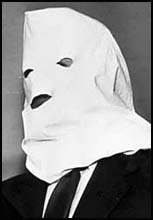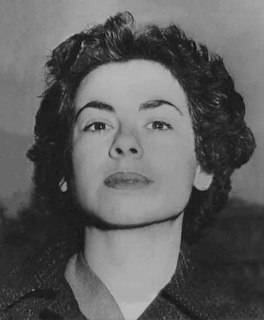Related Research Articles

Alger Hiss was an American government official accused in 1948 of having spied for the Soviet Union in the 1930s. Statutes of limitations had expired for espionage, but he was convicted of perjury in connection with this charge in 1950. Before the trial Hiss was involved in the establishment of the United Nations, both as a U.S. State Department official and as a U.N. official. In later life he worked as a lecturer and author.
The Venona project was a United States counterintelligence program initiated during World War II by the United States Army's Signal Intelligence Service, which ran from February 1, 1943, until October 1, 1980. It was intended to decrypt messages transmitted by the intelligence agencies of the Soviet Union. Initiated when the Soviet Union was an ally of the US, the program continued during the Cold War, when it was considered an enemy.

Igor Sergeyevich Gouzenko was a cipher clerk for the Soviet embassy to Canada in Ottawa, Ontario. He defected on 5 September 1945, three days after the end of World War II, with 109 documents on the USSR's espionage activities in the West. This forced Canada's Prime Minister Mackenzie King to call a Royal Commission to investigate espionage in Canada.

Harry Dexter White was a senior U.S. Treasury department official. Working closely with the Secretary of the Treasury Henry Morgenthau, Jr., he helped set American financial policy toward the Allies of World War II. He was later accused of espionage by passing information to the Soviet Union.
Nathan Gregory Silvermaster, an economist with the United States War Production Board (WPB) during World War II, was the head of a large ring of Communist spies in the U.S. government. It is from him that the FBI Silvermaster File, documenting the Bureau's investigation into Communist penetration of the Federal government during the 1930s and 1940s, takes its name. His wife, Helen and stepson, Anatole Volkov, were members of his ring.

Judith Coplon Socolov was a spy for the Soviet Union whose trials, convictions, and successful constitutional appeals had a profound influence on espionage prosecutions during the Cold War.
Harold Glasser was an economist in the United States Department of the Treasury and spokesman on the affairs of the United Nations Relief and Rehabilitation Administration (UNRRA) 'throughout its whole life' and he had a 'predominant voice' in determining which countries should receive aid. Glasser was a member of the Perlo group of Soviet spies during World War II and worked closely with Harry Dexter White. His code name in Soviet intelligence and in the Venona files is "Ruble".
Lt. Col. Duncan Chaplin Lee (1913–1988) was confidential assistant to Maj. Gen. William Donovan, founder and director of the Office of Strategic Services (OSS), World War II-era predecessor of the CIA, during 1942–46. Lee is identified in the Venona project as the Soviet double agent operating inside OSS under the cover name "Koch," making him the most senior alleged source the Soviet Union ever had inside American intelligence.
As early as the 1920s, the Soviet Union, through its GRU, OGPU, NKVD, and KGB intelligence agencies, used Russian and foreign-born nationals, as well as Communists of American origin to perform espionage activities in the United States, forming various spy rings. Particularly during the 1940s, some of these espionage networks had contact with various U.S. government agencies. These Soviet espionage networks illegally transmitted confidential information to Moscow, such as information on the development of the atomic bomb. Soviet spies also participated in propaganda and disinformation operations, known as active measures, and attempted to sabotage diplomatic relationships between the U.S. and its allies.
Maurice Halperin (1906–1995) was an American writer, professor, diplomat, and accused Soviet spy.
Harry Magdoff was accused by a number of authors as having been complicit in Soviet espionage activity during his time in US government. He was accused of passing information to Soviet intelligence networks in the United States, primarily through what the FBI called the "Perlo Group." Magdoff was never indicted, but after the end of the Cold War, a number of scholars have inspected declassified documents from U.S. and Soviet archives. They cite these documents to support the claim that Magdoff was involved in espionage. Other authors have taken issue with some of the broader interpretations of such materials which implicate many Americans in espionage for the Soviet Union, and the allegation that Harry Magdoff was an information source for the Soviets is disputed by several academics and historians asserting that Magdoff probably had no malicious intentions and committed no crimes.
Alexander Koral was an American member of the Communist Party of the United States (CPUSA) who headed a network of spies for Soviet intelligence during World War II called the "Art" or "Berg" group. Koral's wife, Helen Koral, also was involved with the group.
Haik Badalovich Ovakimian, Major General, USSR, better known as "the puppetmaster" in intelligence circles, was a leading Soviet NKVD spy in the United States.
William Marias Malisoff, also William Marias Malisov, was born in Ekaterinoslav, Russia, now Dnipro Ukraine, immigrated to the United States as a child, and became a naturalized United States citizen. Malisoff obtained a BS in 1916, an MA in 1917 and CE in 1918 degrees from Columbia University and a PhD. from New York University in 1925. Malisoff was an associate professor of biochemistry and lecturer in philosophy at University of Pennsylvania from 1922 to 1934. From 1934 to 1942 he was associate professor of biochemistry at Brooklyn Polytechnic Institute. In 1938-1939 Malisoff was delegated NEC member of University Federation for Democracy and Intellectual Freedom. He owned and operated United Laboratories, Inc, a company principally engaged in research on lubricating processes for chemical products, war industries and biochemistry. From 1936 to 1942 Malisoff was a regular contributor on science and technology to the New York Times Book Review. Malisoff along with Niels Bohr, Bertrand Russell, Ernest Nagel et al sat on the Advisory Committee of the International Encyclopedia of Unified Science. From 1934 to 1944 he was on the editorial board of Philosophy of Science journal. In 1945 Malisoff was connected with the Institute for the Unity of Science for a short time. Chemical researcher Kapok-Milkweed project, United States Navy, 1944; Essex College of Medicine, Newark, New Jersey, 1945-1946; Director of research Longevity Research Foundation, New York, since 1946.
The Silvermaster File of the United States' Federal Bureau of Investigation is a 162-volume compendium of some 26,000 pages of documents relating to the Bureau's investigation of Communist penetration of the U.S. federal government during the Cold War.

Main Intelligence Directorate, abbreviated GRU, was the foreign military intelligence agency of the Soviet Army General Staff of the Soviet Union until 1991. For a few months it was also the foreign military intelligence agency of the newly established Russian Federation until 7 May 1992 when it was dissolved and the Russian GRU took over its activities.

Mike Gruntman is a physicist, space engineer, and author. He is professor of astronautics and aerospace engineering at the Viterbi School of Engineering, University of Southern California (USC).
Robert J. Lamphere was former an agent of the Federal Bureau of Investigation (FBI) involved in the cases of atomic spies Klaus Fuchs, Harry Gold, Julius Rosenberg, and Ethel Rosenberg, as well as British spy Kim Philby. "He had a hand in every major Soviet spy case from the end of World War II through the mid-1950s."
References
- ↑ "Enemy Amongst Trojans: Telling the story of a USC instructor—and Soviet spy" (PDF). USC Viterbi Engineer Spring 2011. USC. 2011. p. 13.
- ↑ Mike Gruntman. Enemy amongst Trojans : a Soviet spy at USC. Figueroa Press. ISBN 9781932800746.
- 1 2 Mike Gruntman (Dec 2015). "Studies in Intelligence" (PDF). Journal of the American Intelligence Professional (Declassified). 59 (5): 74.
 This article incorporates text from this source, which is in the public domain.
This article incorporates text from this source, which is in the public domain.